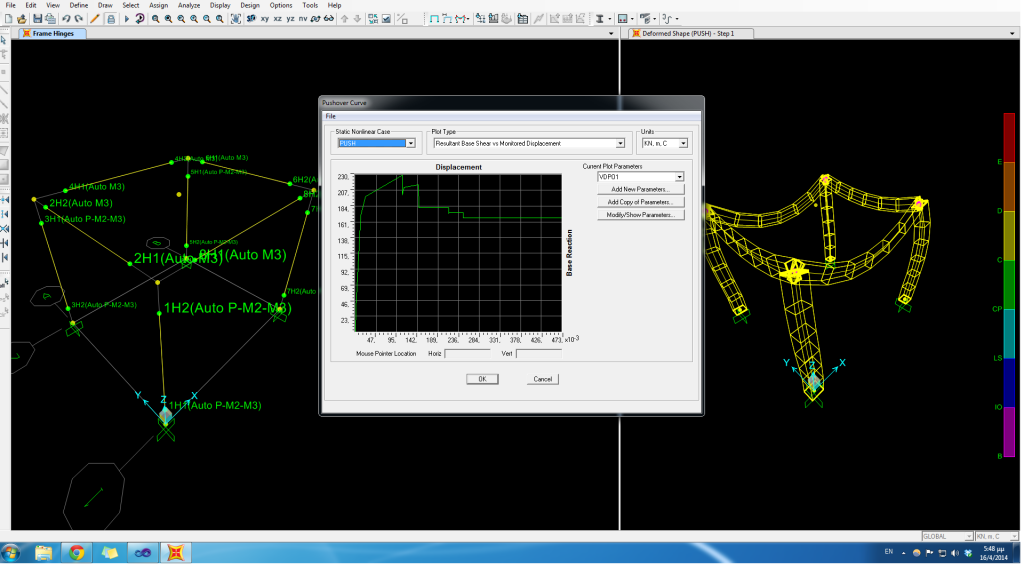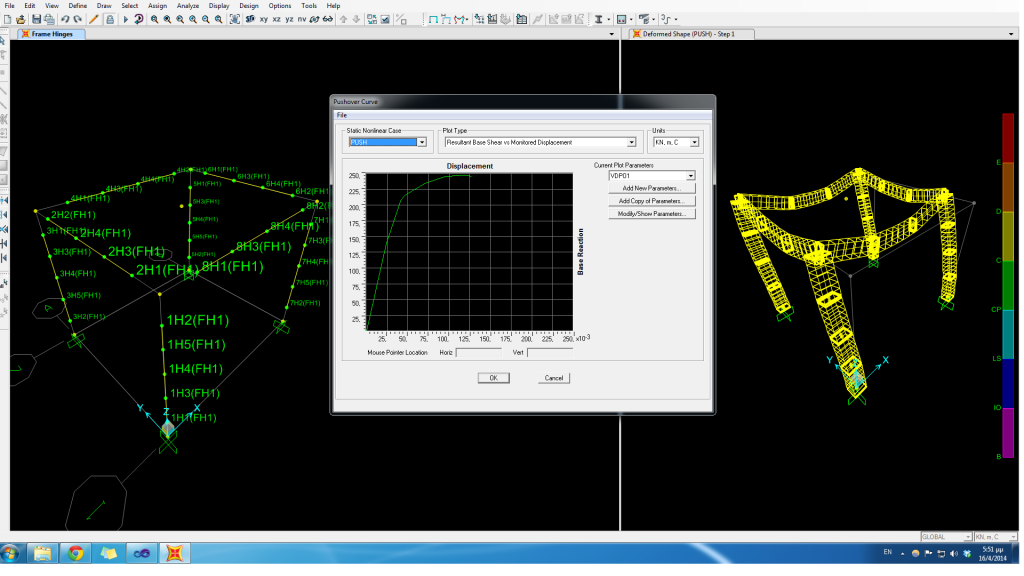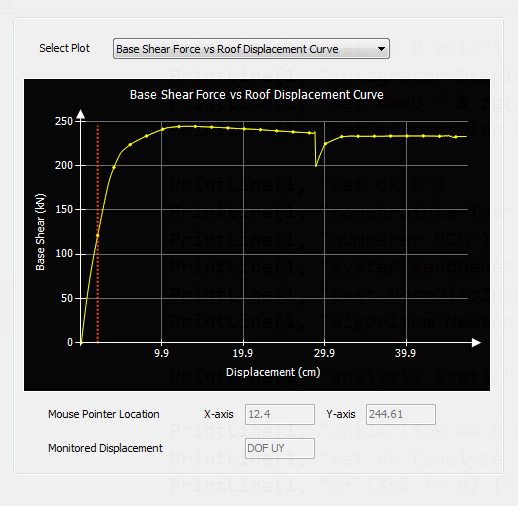StereoCivil
Structural
Dear All,
I am running a Pushover analysis for some 3D RC frame structures with OpenSees and trying to compare the results with SAP2000.
I am using nonlinear fiber sections (distributed plasticity) in OpenSees, so, to achieve a similar modelling in SAP2000, I used Section Designer to create the sections, set reinforcing bars and define fiber layout, and then assigned fiber hinges P-M-M ( with "Default from section" fiber definition option selected) to column & beam elements. This way, I think that definition of nonlinear properties of the structure approximates OpenSees fiber sections.
After some pushover analyses, for instance say a regular 1-floor - 1 bay building, I get quite similar pushover curves from OpenSees & SAP2000 ( an ascending bilinear elastic branch until ultimate displacement and then a descending one) , but thing is that these displacements are relatively large for this building (>25.3 in).
When I try a pushover with user-defined hinges properties (not fiber ones) in SAP, what I get is a much different curve with sudden strenth drops and much smaller ultimate displacements.
What I need to know is, whether the results I get from fiber hinges-sections are considered normal or not, because my experience in nonlinear analysis is limited.
Thank you for your time
I am running a Pushover analysis for some 3D RC frame structures with OpenSees and trying to compare the results with SAP2000.
I am using nonlinear fiber sections (distributed plasticity) in OpenSees, so, to achieve a similar modelling in SAP2000, I used Section Designer to create the sections, set reinforcing bars and define fiber layout, and then assigned fiber hinges P-M-M ( with "Default from section" fiber definition option selected) to column & beam elements. This way, I think that definition of nonlinear properties of the structure approximates OpenSees fiber sections.
After some pushover analyses, for instance say a regular 1-floor - 1 bay building, I get quite similar pushover curves from OpenSees & SAP2000 ( an ascending bilinear elastic branch until ultimate displacement and then a descending one) , but thing is that these displacements are relatively large for this building (>25.3 in).
When I try a pushover with user-defined hinges properties (not fiber ones) in SAP, what I get is a much different curve with sudden strenth drops and much smaller ultimate displacements.
What I need to know is, whether the results I get from fiber hinges-sections are considered normal or not, because my experience in nonlinear analysis is limited.
Thank you for your time



